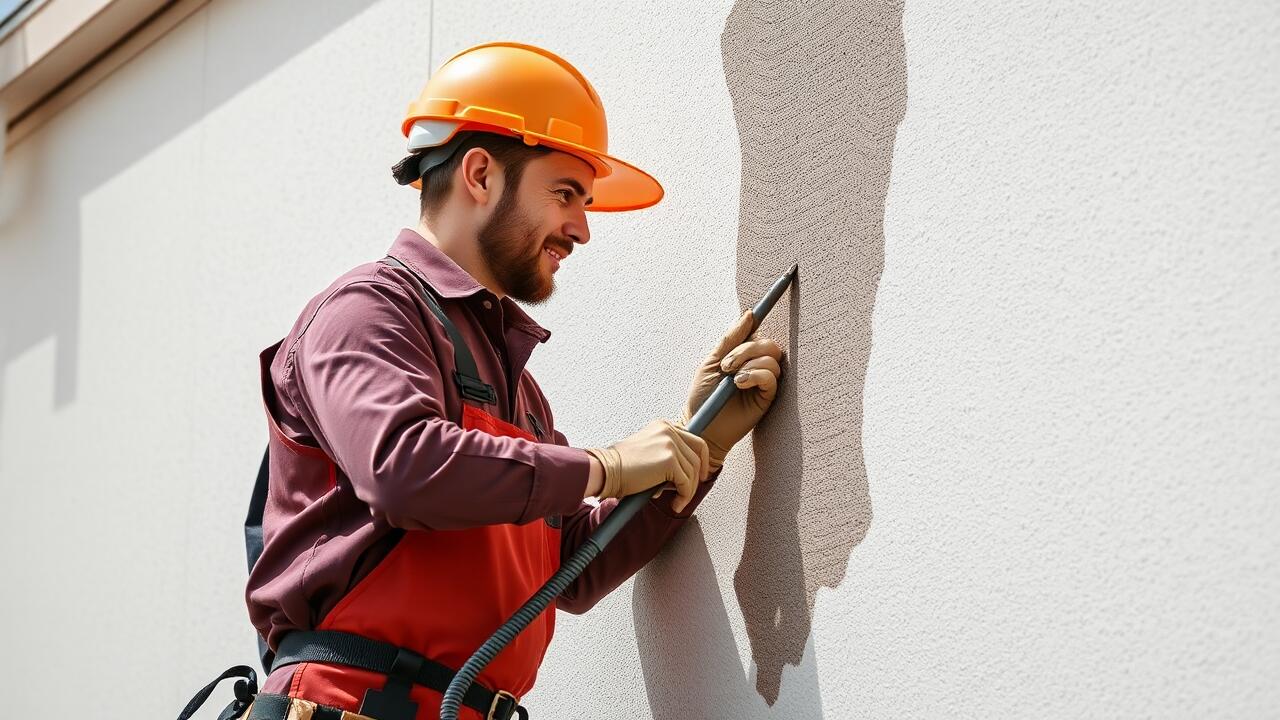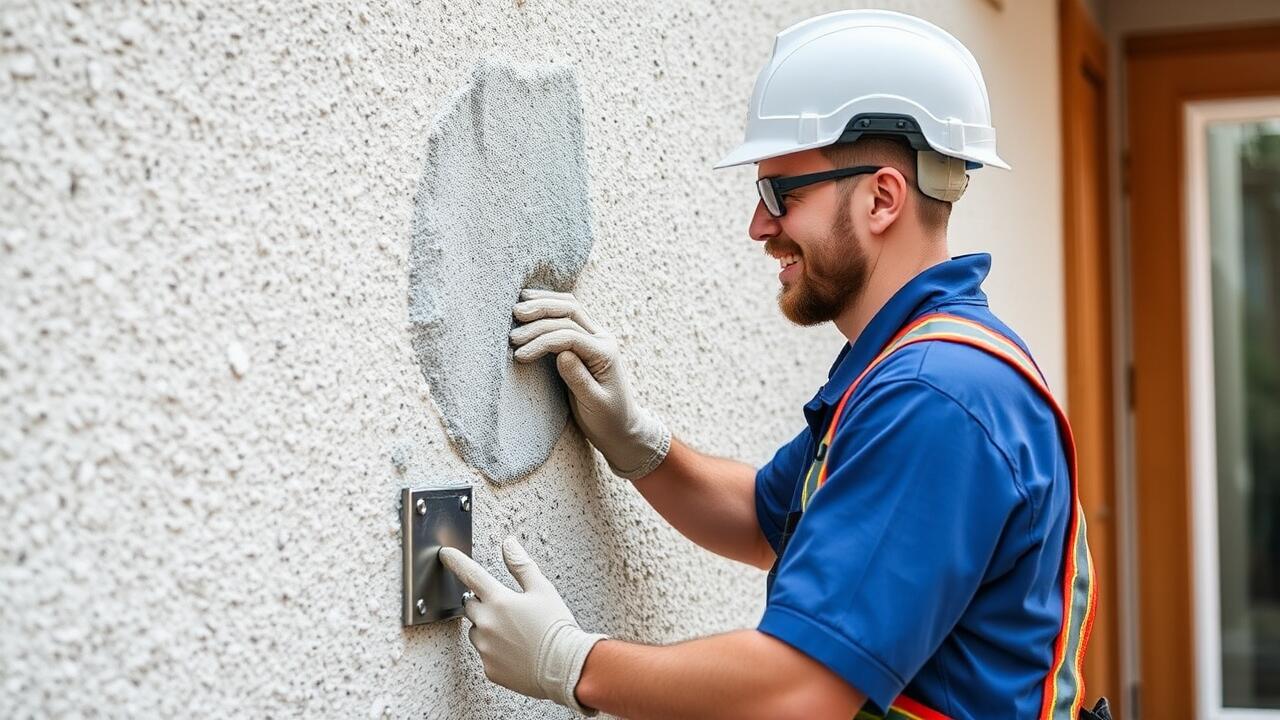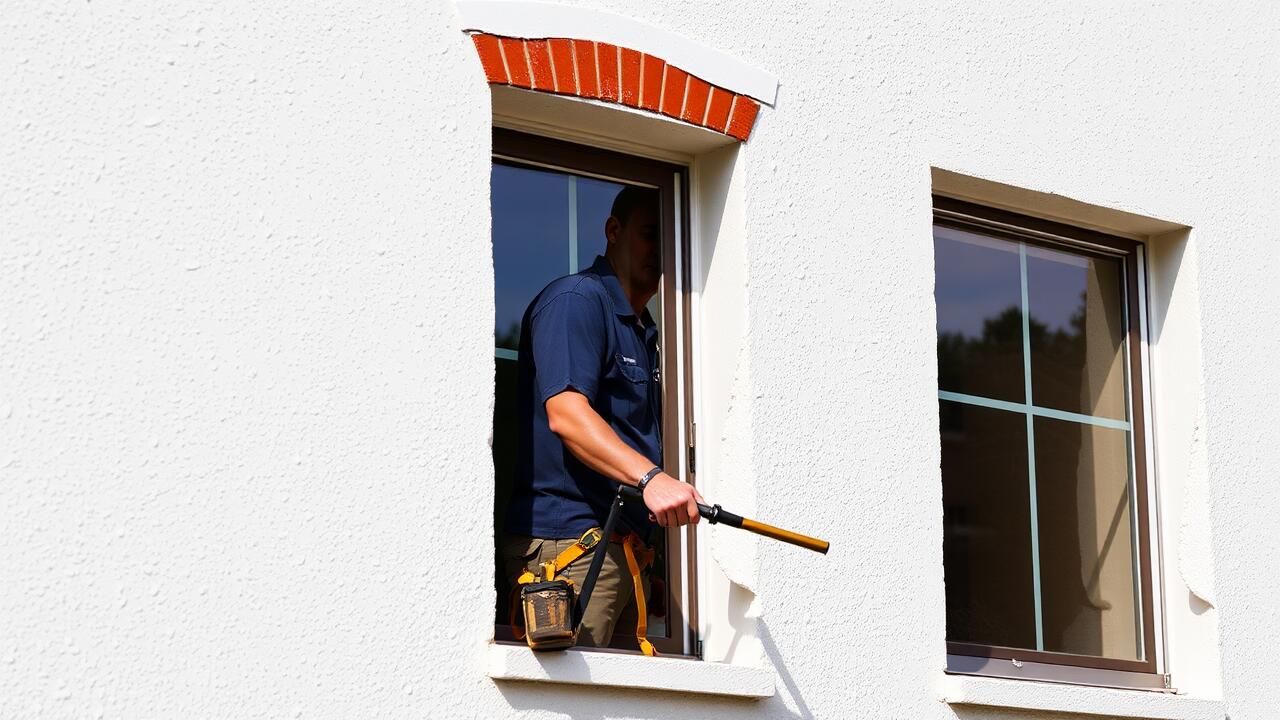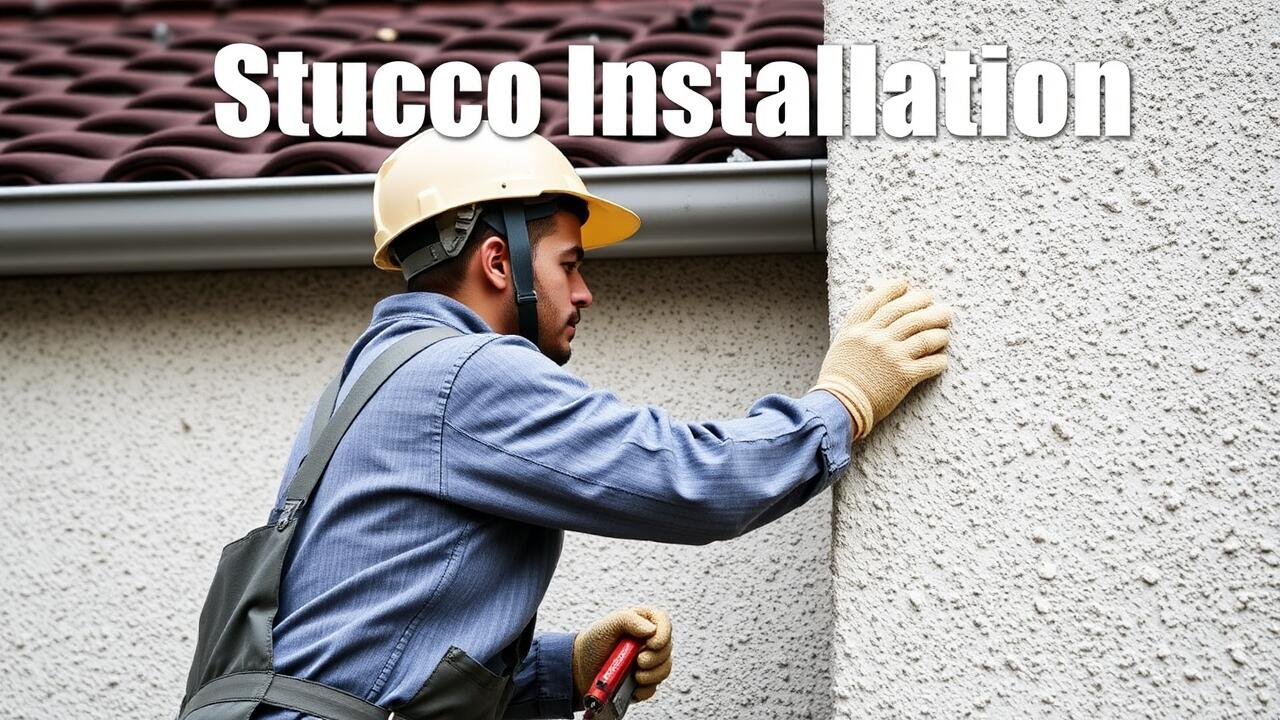
Choosing the Right Stucco Type
Choosing the right stucco type is essential for achieving the desired aesthetic and durability in a project. Various options are available, including traditional hard coat, synthetic stucco, and acrylic finishes. Each type features distinct characteristics that can influence both appearance and performance. For instance, synthetic stucco is lighter and may offer better insulation properties, while traditional hard coat provides a more classic look with the potential for improved durability.
When considering options in areas like Pacific Palisades, Los Angeles Stucco Installation, regional climate and architectural style play significant roles. Local weather patterns can affect the suitability of certain stucco types, as moisture levels and temperature fluctuations might necessitate specific materials to ensure longevity. Additionally, the architectural style of a home may dictate which stucco finish complements the overall design, making it crucial to align stucco selection with both functional and aesthetic requirements.
Different Stucco Materials and Their Impact
The choice of stucco material significantly influences the installation process and the overall aesthetic of the finished product. Traditional cement-based stucco is widely used for its durability and versatility. On the other hand, synthetic stucco, which often includes materials like acrylic, can provide increased flexibility and a variety of textures. This variation in composition can affect application times and techniques, making it essential for homeowners to consider their preferences and local climate conditions.
In regions like Tarzana, Los Angeles, stucco installation might also be impacted by the specific material chosen. For instance, a lightweight synthetic option may require less drying time compared to traditional materials. Additionally, local regulations and building codes can dictate material choices, which may influence not only the visual appeal but also the durability and maintenance needs of the structure. Understanding these differences allows homeowners to make informed decisions about their stucco projects.
Typical Installation Timelines
The timeline for stucco installation can vary based on several factors, including the home's size and the complexity of the project. For a standard residential structure, the entire process typically takes between three to six weeks. This duration encompasses preparation, application, and drying times. In regions like Tarzana, Los Angeles, stucco installation may be influenced by local weather conditions, which can either accelerate or delay the process.
Different types of stucco systems also affect installation timelines. Traditional three-coat stucco systems usually require more time due to the multiple layers involved, while one-coat systems can significantly reduce the duration. Homeowners in Tarzana, Los Angeles, should consider these differences when planning their projects to ensure they have a realistic expectation of the installation timeline.
Average Duration for Complete Applications
The timeline for a complete application of stucco can vary widely based on several factors, including the size of the project and the type of stucco being used. Typically, homeowners can expect the process to take anywhere from a few days to several weeks. In Canoga Park, Los Angeles stucco installation projects often fall within this range, depending on weather conditions and the specific methods employed by the contractors.
For instance, a standard three-coat stucco system generally requires a minimum of three days for the application of different layers. However, additional time may be necessary for curing between coats. If the project includes intricate finishes or additional architectural features, this could further extend the timeline, making pre-planning crucial for an accurate estimate. Homeowners should also factor in time for any necessary inspections or touch-ups that may be required after the main application is completed.
Post-Installation Considerations
After the stucco installation is complete, several factors come into play that can affect the longevity and appearance of the finish. Weather conditions are a significant consideration; extreme temperatures, humidity levels, and exposure to moisture can all impact the drying process and the overall durability of the stucco. Homeowners should ensure proper ventilation and drainage around the newly finished stucco surfaces to prevent water damage and maintain structural integrity in the long term.
Additionally, regular maintenance plays a crucial role in preserving the beauty of stucco. This includes checking for cracks, stains, or discoloration, which may indicate underlying issues that need to be addressed. For residents considering Los Feliz, Los Angeles stucco installation, it’s advisable to consult with professionals about the best practices for upkeep tailored to the local environment. Routine inspections and timely repairs can help extend the life of the stucco and enhance the home's curb appeal.
Factors Affecting Subsequent Finishing
Several elements can influence the finishing process after stucco installation. Weather conditions play a crucial role; high humidity or rain can delay drying times, while excessively hot temperatures might cause the stucco to dry too quickly, resulting in cracks. Additionally, the surface preparation and application techniques used by the installer can affect the quality of the finish. Properly applying the right amount of moisture before finishing can lead to a smoother, more refined surface.
The choice of finish type also contributes to how long the post-installation phase takes. Textured finishes may require additional layers and more time to apply correctly. In areas like Pacific Palisades, Los Angeles Stucco Installation might call for specific techniques that accommodate the local climate and aesthetics. Homeowners should consider these factors when planning their project to ensure a desirable outcome.
FAQS
How long does it typically take to install stucco?
The installation of stucco usually takes between one to three weeks, depending on the size of the project and the weather conditions.
What factors can influence the installation time of stucco?
Several factors can influence the installation time, including the type of stucco used, the complexity of the project, the weather, and the experience of the installers.
Does the type of stucco material affect the installation timeline?
Yes, different stucco materials may have varying installation timelines. For example, traditional cement stucco may take longer due to multiple layers and curing time compared to synthetic stucco.
Are there any weather conditions that can delay stucco installation?
Yes, extreme weather conditions such as heavy rain, snow, or extreme heat can delay stucco installation as they affect the curing process and the overall working conditions.
How can I ensure a timely stucco installation?
To ensure a timely stucco installation, choose a reputable contractor, prepare the site in advance, and schedule the work during favorable weather conditions.



